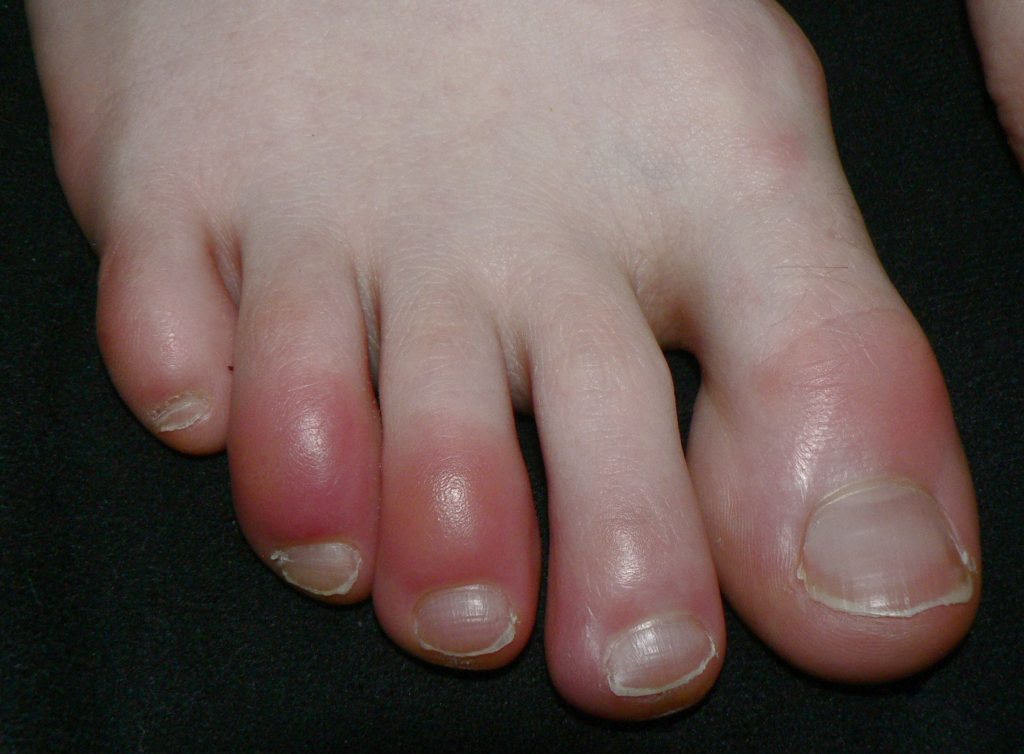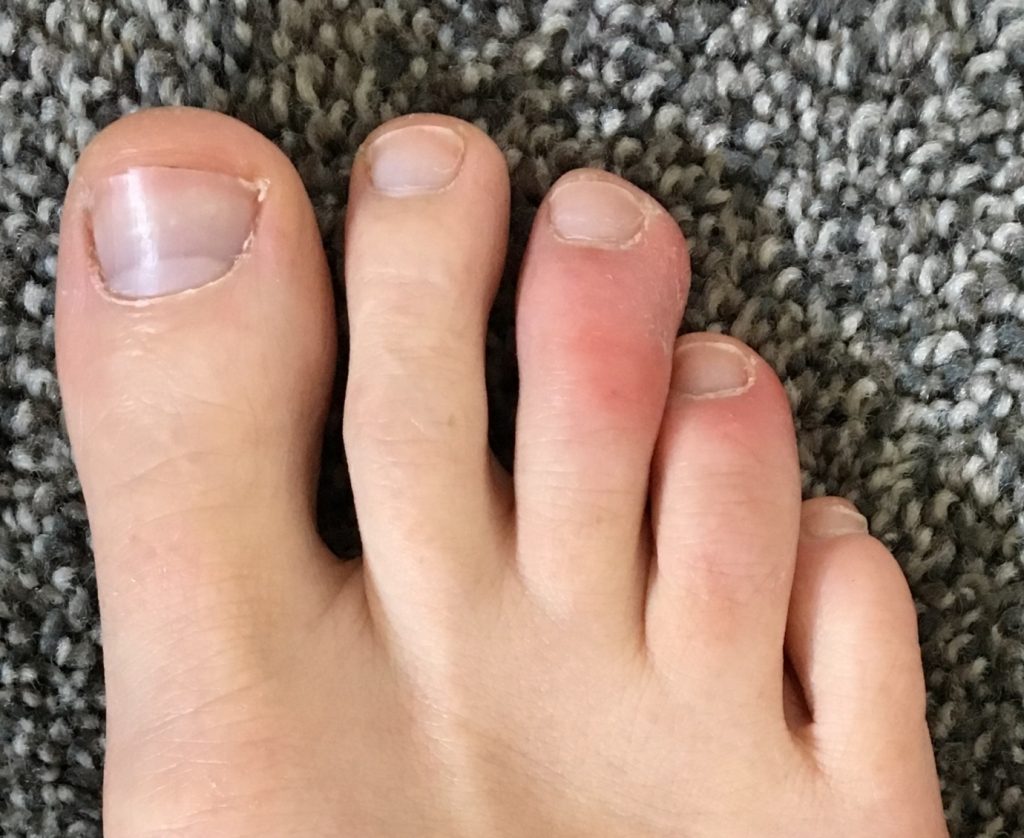Do your feet seem to sweat more than others? Do they regularly carry an unpleasant…
Chilblains
 We’ve all experienced the feeling – we get caught outside in the cold and our toes (or fingers) feel numb and a little stiff. When we finally get inside and have a chance to warm up, we feel that rush of blood coming through as they defrost – and all of a sudden our toes or fingers feel tingly, uncomfortable and even painful. This is very similar to chilblains, except that with chilblains, the sudden warmth causes the blood to leak out of the vessels, turning our toes red and leaving them feeling sore and tender.
We’ve all experienced the feeling – we get caught outside in the cold and our toes (or fingers) feel numb and a little stiff. When we finally get inside and have a chance to warm up, we feel that rush of blood coming through as they defrost – and all of a sudden our toes or fingers feel tingly, uncomfortable and even painful. This is very similar to chilblains, except that with chilblains, the sudden warmth causes the blood to leak out of the vessels, turning our toes red and leaving them feeling sore and tender.
As chilblains are a very common yet poorly understood foot problem faced by many New Zealanders every year – particularly around now when we’re hitting the slopes – our podiatry team have shared all about chilblains, including how to prevent them. Let us know if you have any questions!
 What causes chilblains?
What causes chilblains?
To best understand chilblains, we must understand that the blood vessels in our feet (and hands) regularly expand (dilate) and narrow (constrict) depending on a variety of conditions – one of them being our environment and hot/cold temperatures. When it’s hot, our blood vessels dilate, letting more blood flow through the vessels in an effort to get rid of any extra warmth and keep our core body temperature regulated. Out of interest, other things that cause vasodilation include exercise, alcohol (hence why your skin can get flushed!), as part of the inflammatory process, and many more.
When our feet are exposed to cold temperatures, we want to limit the loss of heat and our body temperature dropping. So our vessels narrow and constrict, and so a smaller volume of blood will be passing through the vessels.
With chilblains, it is the rapid change from vasoconstriction (narrow vessels) to vasodilation, where the blood starts rushing through, this can cause damage to the vessels and result in blood leaking to the surrounding tissues – so the affected area (often the toes) becomes inflamed, red or purple and tender. Your toes may also throb and itch – but you must be careful not to scratch them as your skin may be more vulnerable to breaking at this stage.
Examples of scenarios that may trigger this response include going from the snow straight into a hot shower, and putting very cold feet directly in front of a fire or heat source.
Some people are more likely to develop chilblains than others
Any person can suffer from chilblains if they move from extreme cold to extreme hot too rapidly. Some have been shown in the literature to have a higher risk – specifically kids, older adults and anyone with circulation problems in the feet. There is also evidence that the tendency to get chilblains may run in families, and lower body weight, hormone changes, connective tissue diseases and bone marrow disorders may also increase your likelihood.
Managing chilblains
We say ‘managing’ instead of ‘treating’ because when it comes to chilblains, prevention is 100% the best cure. Preventing chilblains means following very simple principles – though it can be difficult when your feet are super cold and you just want some warmth and relief! In these cases, avoid exposing your feet (or hands) to direct heat and let them warm up somewhat first before jumping in the shower or getting that hot water bottle. Put an extra pair of socks on, jump under a blanket (not an electric blanket!) or try to stay at room temperature for 10-15 minutes before starting to actively heat your feet. Let your feet naturally adjust to a slight increase in temperature so the vessels gradually expand without damage.
If you already have chilblains, or they do develop, unfortunately, the damage has already been done. You can try creams to help manage your swelling and itching to make it more comfortable, but the chilblains and their symptoms can last weeks as your body repairs the damage.
Struggling with foot pain?
If you’re struggling with foot pain or problems this winter, whether it’s related to chilblains, hitting the slopes, or lockdown exercise has taken its toll, our experienced podiatry team are here to help. Book your appointment online or call us on 06 370 4057
